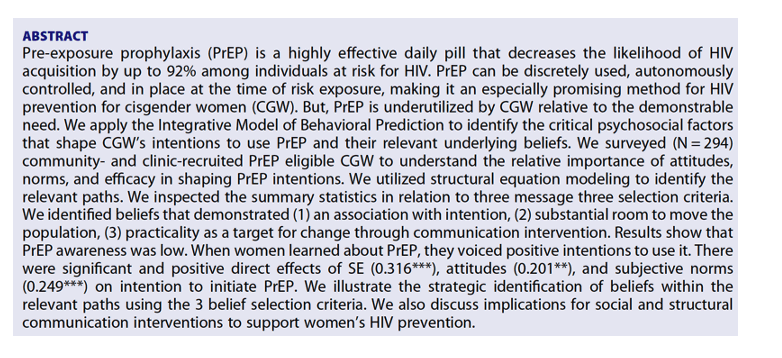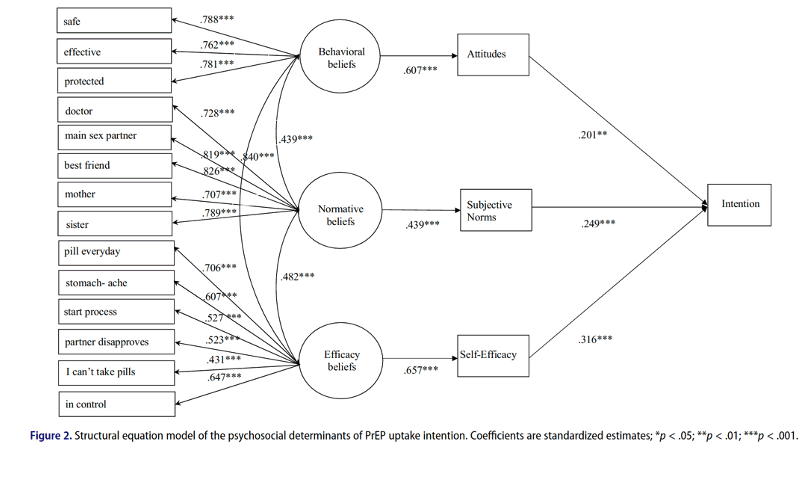| |
Understanding Psychosocial Determinants (Beliefs, Attitudes) of PrEP Uptake Among Cisgender Women Experiencing Heightened HIV Risk: Implications for Multi-Level Communication Intervention
|
| |
| |
Download the PDF here
Nov 2022

Successful intervention activities to increase PrEP utilization will necessarily include communications components to raise awareness of and knowledge about PrEP, promote uptake, and support adherence and retention.
In this study, we sought to understand the relative importance of psychosocial factors shaping women’s intentions to use PrEP from the perspective of The RAA [reasoned research approach]. In our analysis, perceptions of behavioral control, subjective norms and attitudes are important psychosocial paths that shape intentions to use PrEP among CGW. In this study, we found that SE was weighted most heavily in the formulation of intention to uptake PrEP, followed by normative perceptions and to a lesser extent, attitudes.
Daily oral PrEP with TDF/FTC is both highly effective at reducing HIV transmission and well-tolerated, but has not been widely utilized by CGW at risk for HIV. Along with barrier contraception, PrEP is integral to HIV risk reduction for CGW and the elimination of disparities in HIV acquisition. Nationally, CGW represent only 2–3% of PrEP users, a disparately low number relative to the need for prevention. Further, Black women are dramatically underserved relative to patterns of infection and the distribution of PrEP uptake among women. Yet, there is inchoate literature on CGWs PrEP uptake, particularly in relation to modeling the relative importance of the many factors that may shape their decision to use PrEP.
This analysis suggests which beliefs could be fruitful targets in terms of their distribution in the sample and their correlation with intentions. However, this analysis does not reveal which beliefs could be reasonably expected to be changed through communication and behavioral intervention.
Finally, the RAA approach provides prescription for strategic efforts (i.e., community discussions, patient-provider communication tools, advertising, op-eds, behavioral interventions) to raise awareness of PrEP and cultivate intentions to use it in this population through persuasion or changing the extremity with beliefs are held. Another strategy is to render the beliefs that people already strongly endorse more salient, or media priming (Fishbein & Yzer). Communication efforts to raise PrEP awareness and uptake could focus on highlighting the beliefs that women already endorse, which are favorable to PrEP to uptake but have weak correlations with intention. Strengthening the correlations between positively held beliefs and behavioral intentions has the potential to induce change in large proportions of the audience (Fishbein & Yzer). Extant research demonstrates the media priming phenomenon in political communication contexts (Ewoldsen & Rhodes). Future research should test this potentially powerful mechanism of effects in this context.

|
|
| |
| |
|
|
|